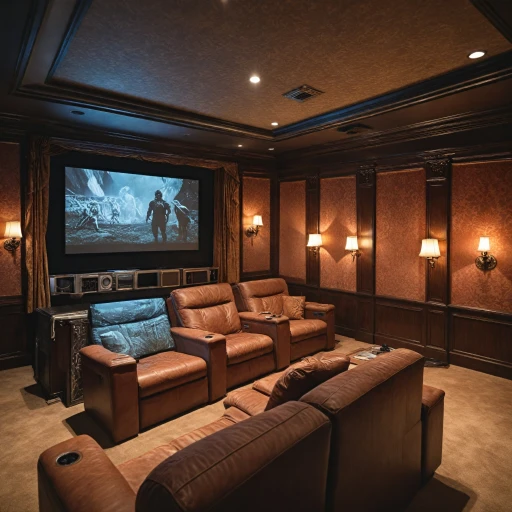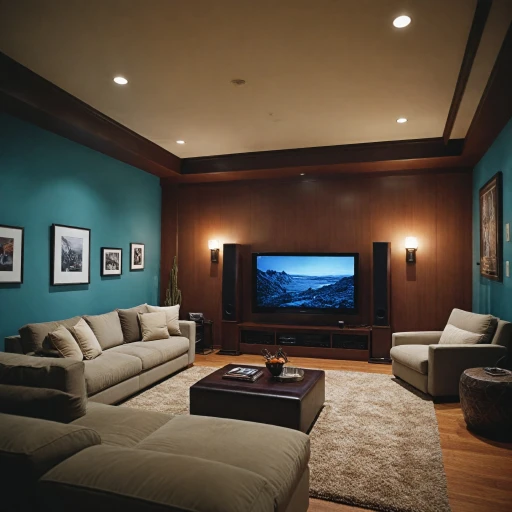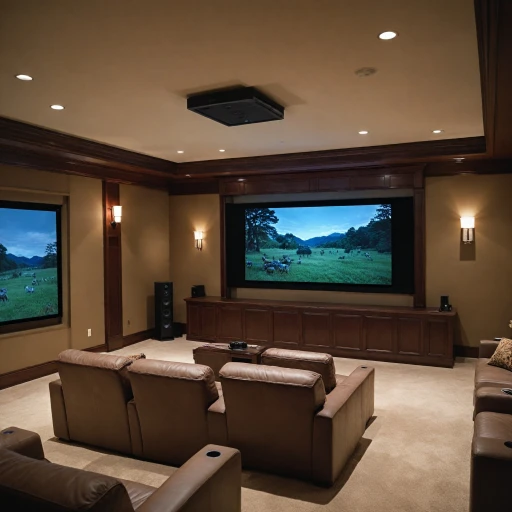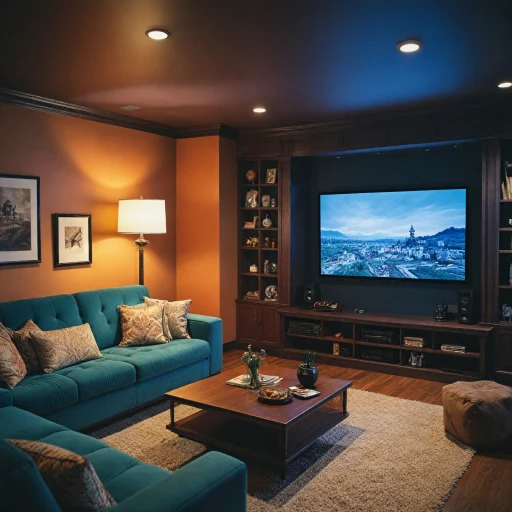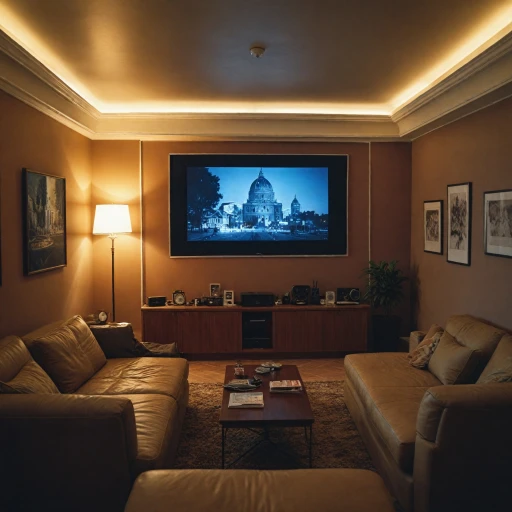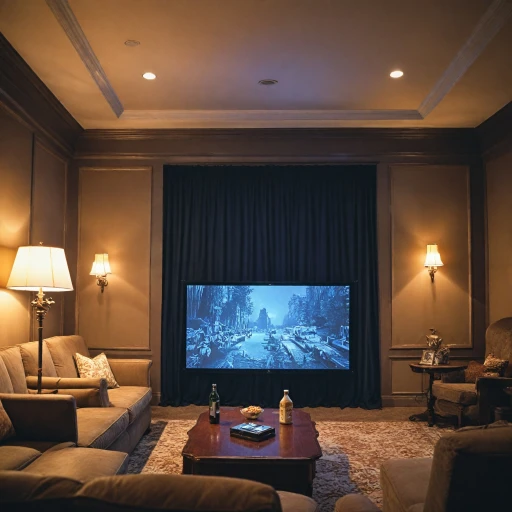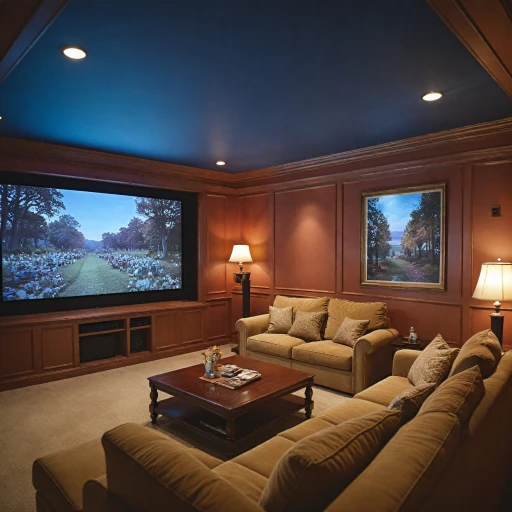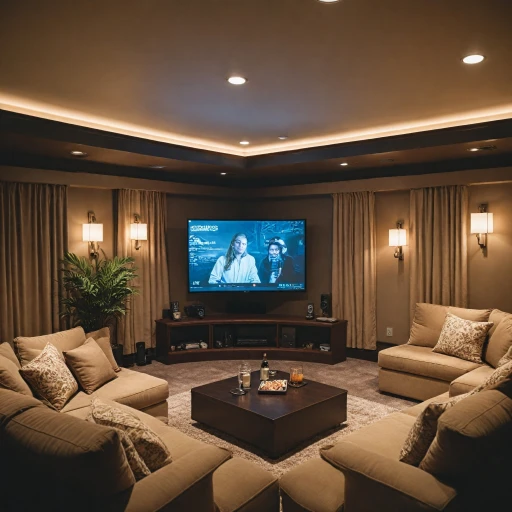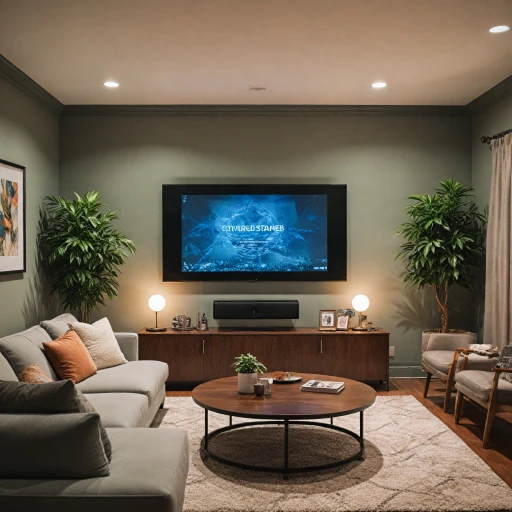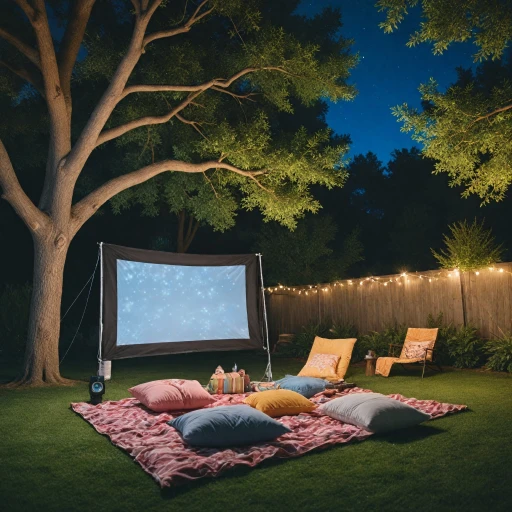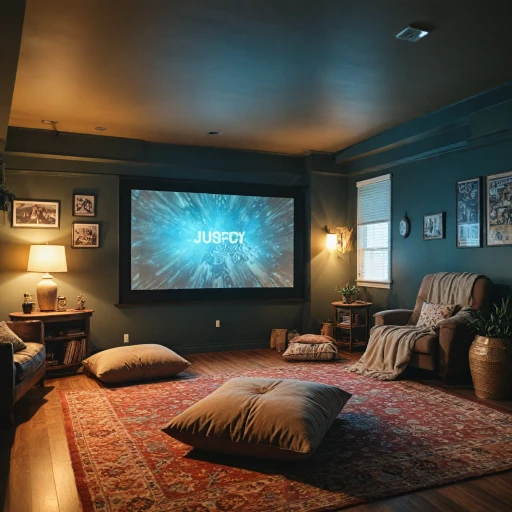
Understanding Different Types of Projector Screens
Exploring the Variety of Projector Screens
When it comes to setting up a home theater, selecting the right projection screen can profoundly affect your viewing experience. The journey starts with exploring the diverse types of screens available on the market. From fixed frame to motorized options, each has its own unique features that cater to different viewing preferences and room setups.
Fixed frame screens are a popular choice for dedicated home theaters due to their ability to maintain flatness, ensuring a crisp image quality. These screens, like those from Elite Screens or Silver Ticket, offer excellent viewing angles and are typically designed to minimize disturbances from ambient light.
For those with space constraints or seeking flexibility, portable options or floor rising screens may be more suitable. Portable projectors can easily be paired with these types of screens, making them an ideal choice for temporary setups or meetings in less conventional spaces.
An innovative category to consider is ambient light rejecting (ALR) screens. These are specifically designed to enhance projector performance in environments with more ambient light, allowing for a superior viewing experience even in bright rooms. The clr options fall into this category, catering to most short throw and ultra short throw projectors.
If your entertainment plans extend beyond the living room, an outdoor setup would benefit from motorized screen options. Discover more about enhancing your outdoor entertainment with motorized screens for patios.
Determining the Right Screen Size for Your Space
Finding the Perfect Fit: Screen Dimensions Demystified
Selecting the ideal screen size is fundamental in crafting the ultimate viewing experience in your home theater. The right screen size can dramatically enhance how your images are perceived, making your content vibrant and life-like. To ensure you get the best fit for your space, consider the following factors:- Room Dimensions: Measure the space where you intend to install your projector screen. This includes not only the height and width for a fixed frame installation but also the depth for short throw or ultra short throw projectors.
- Viewing Distance: The distance from the projector screen to your seating area significantly impacts image clarity. Generally, the recommended viewing distance is approximately 1.5 to 2.5 times the diagonal size of the screen.
- Aspect Ratio and Screen Size: Keep in mind that the aspect ratio (such as 16:9 for widescreen movies) will influence the screen size you choose. A screen that matches the native resolution of your projector, such as a 4K ready screen, is crucial for optimal image quality.
- Ambient Light Considerations: Take into account the ambient light in your room. If your room cannot be completely darkened, a light rejecting screen or one with higher gain can be beneficial to maintain picture brightness and clarity.
Material Matters: Choosing the Best Screen Fabric
Selecting the Ideal Screen Fabric for Your Space
Choosing the right screen material is key to maximizing your home theater experience. The material affects how the projected light interacts with the screen to produce the image you see. When it comes to choosing the best projector screen for your space, here are some factors to consider:- Gain: The screen's gain measures its reflectivity compared to a standard white wall. A higher gain indicates a more reflective surface, which can be beneficial in rooms with ambient light. However, higher gain screens can also have narrower viewing angles, so consider your seating arrangement before making a choice.
- Color: White screens are popular for their universal applicability and brightness. However, in high-ambient light rooms, a grey or black screen can perform better by rejecting unwanted light, thereby enhancing the contrast ratio.
- Material: High-quality options include materials like CLR (Ceiling Light Rejecting) and ambient light rejecting (ALR) screens, which enhance the viewing experience by focusing more light towards the viewer. Fixed frame screens from brands like Elite Screens and EPV Screens often offer excellent quality and durability. For personalized setups where space or budget is a consideration, portable projector screens and floor rising screens offer flexibility, though they might not match the fixed frame options in rigidity and tension.
Aspect Ratio and Resolution Considerations
Aspect Ratio and Image Clarity Considerations
When selecting a projector screen for your home theater, understanding aspect ratios is crucial in achieving the best viewing experience. Projectors often support different aspect ratios like 16:9, which is standard for most home theaters, or 2.35:1, often used for cinematic experiences. Choosing the right one impacts not only the projection's alignment but also the overall image presentation.
With ultra short throw projectors becoming increasingly popular, it's essential to consider a screen that complements this type of projection. A fixed frame screen might offer stability, but if your room has space constraints, floor rising screens may provide a more suitable option without compromising on quality.
Resolution plays a pivotal role in preserving image clarity, especially in ambient light settings. High-resolution projectors pair well with light rejecting projection screens, which feature higher gain and help maintain image crispness even in less-than-ideal lighting conditions.
Material choice contributes significantly to resolution output. High-quality screen materials like those from elite screens or silver ticket enhance image precision. When paired with a projector that supports advanced resolutions, your home theater can achieve remarkable clarity, creating an immersive viewing experience just like in a commercial cinema.
Installation Tips for a Seamless Setup
Optimizing Your Screen Installation
When setting up your home theater, ensuring a seamless installation of your projector screen is crucial to achieving the best viewing experience. A proper setup not only enhances the image quality but also prolongs the lifespan of your equipment. Here are some key considerations:- Assess Your Space and Light Conditions: Before you begin, evaluate the ambient light in your room. Screens like the Elite Screens CLR are designed to reject ambient light, providing a clearer image even in well-lit rooms. Light rejecting screens are especially beneficial for spaces where complete darkness isn't achievable.
- Select the Right Screen Type: Depending on your floor plan, a fixed frame screen might be ideal for establishing a permanent theater-like atmosphere. For more flexibility, consider portable or floor rising models that can be easily moved and stored when not in use.
- Installation Height and Distance: To optimize your viewing angle and ensure a comfortable experience, it's important to mount the screen at eye level when seated. This placement also helps in maintaining the correct throw distance for your projector. For short throw or ultra short throw projectors, proper alignment with the screen is vital to avoid image distortion.
- Ensure Proper Screen Tension: If using a fixed frame or retractable screen, make sure it is smoothly tensioned. This prevents wrinkles or ripples that can compromise image quality. High-quality brands like Silver Ticket and EPV Screens offer products with built-in tensioning systems for a flawless picture.
- Secure the Screen Firmly: Double-check all mounts and supports to prevent accidental dislodging. For rooms with a dedicated entertainment setup, integrating the screen into your wall structure can offer added security. In smaller spaces, a portable projector screen with a sturdy stand might be more suitable.

